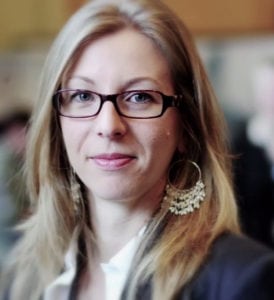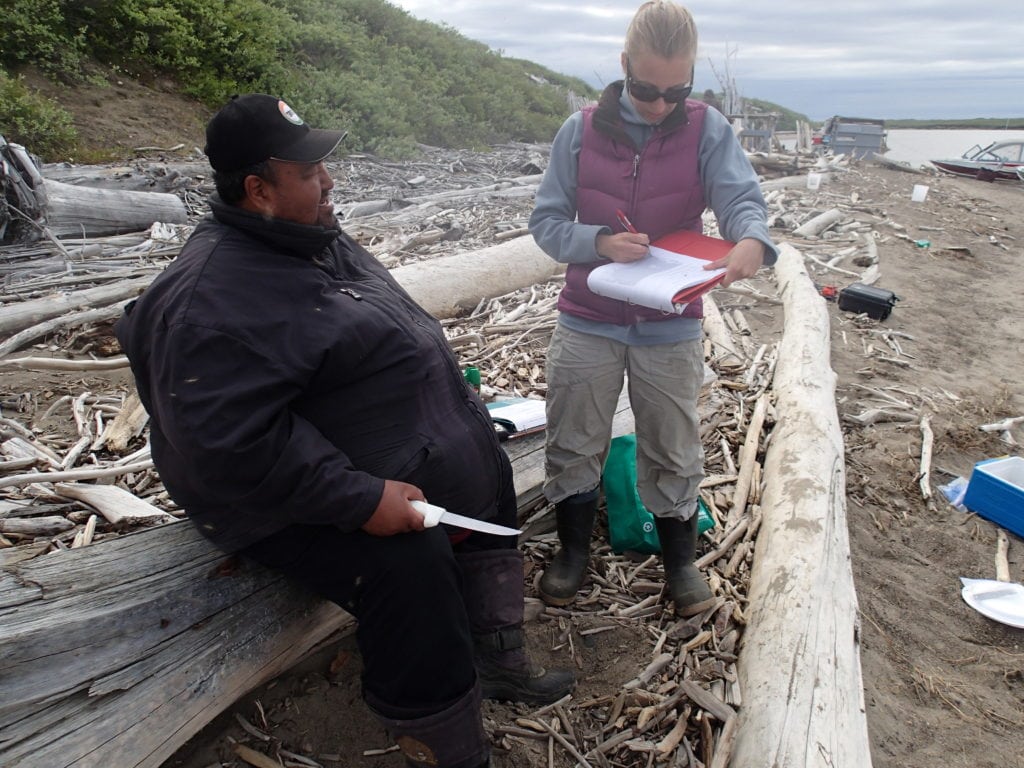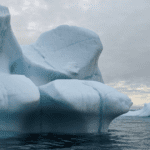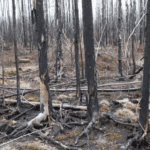Canadian Science Publishing welcomes Dr. Lisa Loseto as the new Co-Editor of our open access journal Arctic Science. Dr. Loseto is a research scientist with Fisheries and Oceans Canada, and her work focuses on the ecology of beluga whales in partnership with Inuit communities in the western Arctic.
Welcome to CSP! From big-city living in Toronto during your undergrad, how did you end up studying in the Canadian Arctic?
At York University they had quite a few professors who had Arctic-based research programs. They had a job opportunity to do work in the North in the summer. I interviewed for the position, and they said “would you like to try to go to Churchill or to Resolute?” I said if I’m going to go North I’m going to go all the way, so I went up to Resolute, and I pretty much fell in love with the Arctic and continued my graduate career doing Arctic-based research.
What made you fall in love with the Arctic?
I think two things. One was just the vast landscape. It’s just incredible, it’s beautiful.
And then the people. The people were just unbelievable to work with … to learn from them, to see how connected they were to the ecosystem, and to see how they live life. I guess it seemed like I was maybe a missing piece of Canada that I got to learn about.

You work very closely with communities in the Arctic. Why is community-based monitoring so integral to your research?
I think two reasons. One is that they are the knowledge holders of the North.
There is no university course or hands-on exposure that would make me understand a beluga whale in the way that they do. They’ve lived generations hunting and seeing them, so they are hands down the experts on beluga whales—I’m learning from them.
Logistically, there are Inuit across the Arctic, and I don’t think Canada has the capacity to have research scientists everywhere. And why would we do that when we have all these knowledge holders?
Beluga whales are iconic creatures in Canada, what is their role in Canada’s Arctic ecosystems and communities?
They’re a high trophic level species in the ecosystem. Belugas are a good indicator of the ecosystem, so if we see a healthy beluga we can make the assumption that the ecosystem is healthy. In terms of being iconic, I guess it’s the connection with people and culture.
In the North, the health of the whale extends to a human health story for the Inuit. If the whale is healthy then people are healthy. Hunting a whale goes beyond just simple nutrition; it extends to the cultural and spiritual well-being of the whole community.
What are the sources for contaminants detected in aquatic Arctic animals?
Most of the contaminants I look at are ones that are known to travel long ranges, and the reasons we were looking at them was to try to help support international regulations on stopping these contaminants. Using that evidence to say they’re showing up in a pristine environment means we need to put bans and regulations on the use of these compounds.
What are some examples of local source contaminants and ones that have travelled far?
Long-range contaminants typically group into three things. Mercury is one that is well known and sometimes confusing because mercury is a naturally occurring metal, but through releasing fossil fuels I think we’ve tripled the amount of mercury.
Man-made compounds fall into two groups. There are legacy compounds—so things like PCBs that we have stopped using, but sadly are still circulating—and then what we call new chemicals that are being made every day—things like repellents or types of flame retardants.
I think something that’s become really popularly discussed among the media is plastics. I think we’re just trying to get a handle on how local versus long range they are. I think originally people thought that plastics are a local issue because you have a local source, and it’s getting into your ecosystem.
But now, we’re looking at that in the Arctic and asking “if we don’t have a local source, do we have plastics coming in and where are they coming from?” So that’s an interesting, confusing one that we’re just starting to get a handle on.
What are the most significant stressors affecting beluga whales today?
There are about 22 populations spread across the circumpolar Arctic and some go further south like the St. Lawrence beluga, so each population has their own unique scenarios.
We know there are two populations that are under significant stress—the St. Lawrence population and the Cook Inlet population—but those populations live in high-density areas where there’s tons of ship traffic. We know there’s pollution, and we know the population is quite low so those are stressful situations.
In the high Arctic where a lot of the other populations exist—and in part the population I study in the Eastern Beaufort Sea—we’ve got a very healthy population with a lot of whales.
What we’re doing is trying to characterize a baseline and say “this is what healthy looks like, these are normal hormone levels, these are low contaminant levels, these are basic disease levels.” We’re trying to characterize what’s normal now in advance of significant changes such as climate change.





